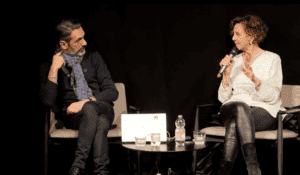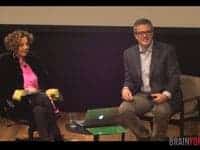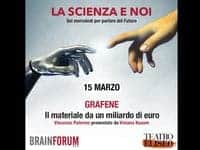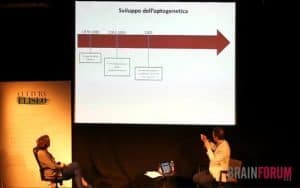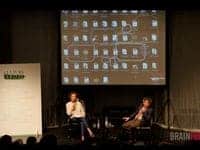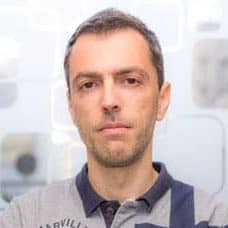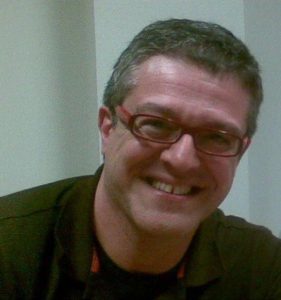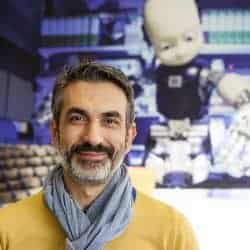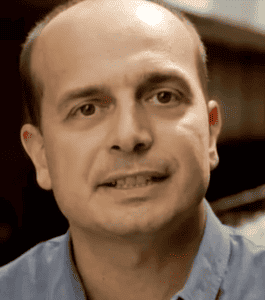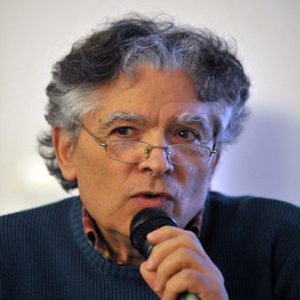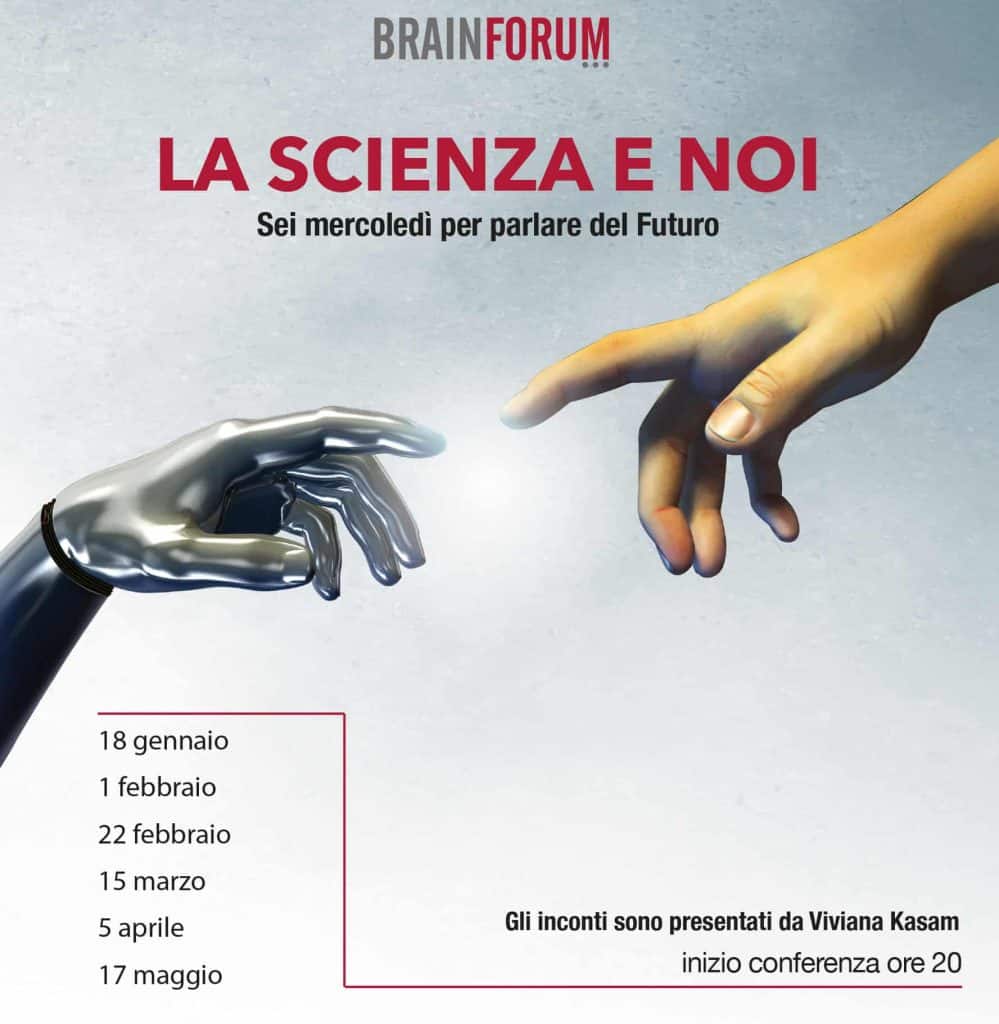
How will the most innovative scientific research change the way we live and perceive the world?
Science and Us has invited six speakers of great national and international importance to talk about the most cutting-edge research and how it will transform the daily lives of each of us, with the desire to convey the emotion and beauty of science to the public.
From the creation of new materials such as graphene to innovations in robotics, data science, up to the new perspectives of optogenetics and quantum physics: the speakers will open science fiction scenarios, presented and interviewed by Viviana Kasam, journalist and president of BrainCircle Italia.
January 18, 8.00 pm – Big Data. The disturbing shadow of big brother
Huge quantities of data, big data, require specific technologies and methods to collect and interpret them. Who can accumulate and use them? With what purposes and limits?
Big data is the term used to describe a collection of data so extensive in terms of volume, velocity and variety that it requires specific technologies and analytical methods to contextualize and interpret it. While on the one hand it will be possible to obtain useful information to simplify and improve life and obtain more accurate forecasts, on the other hand the potential for use they entail poses serious legal and ethical problems.
The risk is that valuable information is centralized in a few hands, which will allow the tastes, conscience and preferences of large sections of the population to be manipulated, as is already happening in the international political context. Can one imagine such enormous amounts of data being used for the benefit of citizens, without limiting freedoms of thought and press?
Antonietta Mira, professor of Statistics at the University of Insubria (Como) and the University of Italian Switzerland (Lugano) where she was vice-dean of the Faculty of Economics and is co-director of the Interdisciplinary Institute of Data Science, which she helped to found in 2014. Maria Grazia Mattei will speak with her, journalist, expert in new communication technologies, founder in 1995 of the Mattei Digital Communication company, a center for research, study and diffusion of new media culture. Since 2005, Mattei has organized Meet the Media Guru meetings, a forum for discussion with the elite of international digital culture, which has established itself as a point of reference for excellence in the field of communication and new media.
February 1st, 8.00pm – Robot. If humanoids look too much like humans
What will be the relationship between humans and robots when robots are able to make decisions, feel emotions, have a conscience? It is one of the questions that have most fascinated literature and cinema, and which new research has made current today. Even without reaching the catastrophic prospects of robots destroying man, legal and ethical problems are beginning to arise urgently, for example in self-driving cars, which are expected to become the main means of transport in the world in a few years. the world. In the not too distant future, robots built in the image and likeness of humans, increasingly sophisticated from a cognitive and emotional point of view, will live and work with and among us. The robots will be used in the medical field, rehabilitation, household chores and interventions in the event of a natural disaster. And there are those who have already imagined a code of ethics for robots.
The meeting will deal in particular with iCub, a small intelligent robot, of which Giorgio Metta is the “father”, designed to learn from a cognitive, behavioral and linguistic point of view through social interaction and individual experience. iCub is the size of a five year old child, it is able to observe the environment around it, touch and take things, write its name, dance, balance on one leg. During the meeting, Metta will present videos of the robot, captivating like a cartoon character, with its big puppy eyes: it can learn to use objects independently, to relate to humans and other robots and finally to adapt to the change in the surrounding environment.
February 22, 8.00 pm – Quantum computers and materials. The great revolution of technology
Quantum computers will be the next global revolution.
When they arrive on the market, they will make all the equipment we use to communicate obsolete in the blink of an eye: not only PCs, but also smartphones and tablets. The reason is that they will be able to guarantee both analysis, calculation and data transmission capabilities unthinkable with traditional technologies, and levels of privacy currently unattainable through intrusion-proof encryption.
But what are quantum computers, in which the IT giants are investing billions? Based no longer on binary logic or classical Newtonian physics, but on the probabilistic theories of quantum physics, they will open up horizons that are unthinkable and largely unpredictable today.
Computers work through binary code, that is, through bits. The bits correspond to electrical impulses, which are encoded within the hardware, to generate sequences of “0” and “1”, which are then translated into specific commands by the computer. In a classical computer the bits can take on the values 0 or 1.
Quantum computers, on the other hand, work with quantum bits, or qubits, which are able to take on the values 0 and 1 at the same time; this property gives them much greater computing power than a normal PC.
But how is it possible that a bit can take on two values at the same time? To understand this we need to delve into the microscopic universe of matter, governed by the laws of quantum mechanics, which describe a world in which nothing is certain and everything is probabilistic.
The future implications could be enormous. With a 300 qubit quantum computer, for example, we would be able to represent an amount of information equivalent to that of 2 to the power 90 bits: a number probably greater than that of all the particles present in the known universe.
By exploiting the fundamental principles of quantum physics, this great revolution in the making, which goes by the generic name of Quantum Technology, promises to bring enormous changes in almost all areas of human society, starting from the field of computation, information , and communication, through the development of new techniques of sensors, diagnostics, and biomedical therapy with levels of precision and efficiency not even imaginable until now, up to the artificial synthesis of new materials and energy conversion systems that could guarantee an unlimited future of sustainable management of the planet’s resources.
Vittorio Giovannetti and Fabrizio Illuminati talk about it.
March 15, 8.00 pm – Graphene. The billion euro material
Who, or what, has most influenced the course of history? Were Napoleon and Julius Caesar more important, or the first craftsmen who learned to manipulate metals and exploit the energy stored in minerals?
Like our past, our future also depends on the properties of the materials we use, and how able we are to control them.
Vincenzo Palermo, interviewed by Viviana Kasam, will talk to the audience about graphene, a crystal the thickness of a single atom, composed of carbon atoms arranged in a hexagonal lattice. It is the thinnest compound in nature (one hundred thousand times thinner than a human hair), the strongest ever discovered (20 times more than steel), the lightest (one square meter weighs approximately 0.77 milligrams) and flexible , impermeable to molecules and electrically and thermally very conductive. Thanks to its unique combination of exceptional properties, graphene is indicated as a revolutionary material, at the basis of profound technological innovations, the so-called “disruptive technologies”, in the most diverse sectors.
Since the revolutionary experiments of Andre Geim and Kostya Novoselov that led to its discovery, awarded with the Nobel Prize for Physics in 2010, graphene has triggered an explosion of scientific activity and is set to have a profound impact in multiple sectors: electronics , medicine, aerospace, automotive, energy storage, water desalination, coatings and paints, solar technologies, communications. Potential graphene-based applications include: new medical technologies, including rapid DNA sequencing, targeted drug delivery, tissue regeneration and bionic implants such as artificial retinas; ultra-efficient and lightweight supercapacitors, a thousand times faster than standard batteries; lightweight, flexible and shatterproof touchscreens for cell phones, tablets and so-called “indomitable technology”.
Starting from prehistory, a fascinating story through Roman legionaries, medieval knights, the industrial revolution and computers, to arrive at the near future, with new carbon-based materials – such as nanotubes or graphene – demonstrating how, sometimes, an extra atom or less it can change the world.
April 5, 8.00 pm – Optogenetics. Coloring neurons to heal the brain (and maybe read minds)
Optogenetics is a recent technology that combines optical and genetic techniques to modify the electrical activity of specific cell populations using light. The neurons of the brain can, in fact, be selectively colored, through genetic mutations or the use of adapted viruses, in order to be read, activated or silenced. This amazing technology has allowed us to make giant strides in the understanding of brain circuits, in the design of a new generation of brain-machine interfaces to the point of hypothesizing its use for innovative therapies for the treatment of neuro-degenerative diseases or, pushing ourselves to the extremes to read minds.
In a recent work, Tommaso Fellin and his colleagues have identified a method that could lead to “cracking” the brain code underlying the use of the 5 senses to interact with the world. That is, they managed to develop the tools to understand how to identify the code that transforms sensory stimuli into that language that neuronal cells exchange to define our actions. Holograms capable of operating as a “switch” that turns cells off and on appropriately.
The implications of this research will be both in the understanding of neurodegenerative diseases, such as Alzheimer’s disease, Autism and Schizophrenia, and in the field of brain-machine interfaces, i.e. the control of the functioning of a machine via electrical impulses generated by the brain. In particular, with respect to this field, the “writing” of appropriate neuronal codes directly in the brain tissue lays the foundations for recovering the perception of the senses in the presence of compromised functionality of the sensory organs.
May 17, 8.00 pm – Brain and quantum physics. Higgs boson, brain and free will
Is it possible to imagine a “unified theory” that can explain the cosmos and biological systems, stars and neurons? And what impact will it have on everyone’s lives? Giuseppe Vitiello talks about it.
The dream of physicists has always been to have a unified theory that could account for all the phenomena observed in nature, from stars to the atom. They thus scrutinized the depths of the Universe and the intimate structure of matter.
Two discoveries have recently rewarded this effort, gravitational waves, predicted a hundred years ago by Einstein, and the Higgs particle, named after the English physicist who, together with others, predicted its existence since the 1960s. The scientific relevance of such discoveries is enormous. From an application point of view, we could compare the discovery of gravitational waves to that of the telescope, in the sense that, as in the case of the telescope, the horizon of the observations we can access expands greatly, perhaps we should say, it becomes boundless . In fact, gravitational waves themselves become an investigative tool to scrutinize the universe around us. The discovery of the Higgs particle also opens vast horizons for our knowledge of the structure of matter with extremely relevant application consequences. It confirms the view that the quantum vacuum actually plays a fundamental role in the properties of matter. Apart from specific aspects linked to the physics of elementary particles, the discovery can bring important consequences in all application sectors where the quantum properties of the system are crucial, think for example of the frontiers of microelectronics and quantum optics, and of the implications for quantum computers, the creation of which will certainly lead to a change in our lives, in the industrial world, in the scientific research activity itself.
But the desire for knowledge is not limited to “inert” matter, it obviously extends to “living” matter and the studies of biology and neuroscience intersect with those of physics. More and more frequently in laboratories all over the world, DNA and the neuron are studied in a joint effort by biologists and physicists, offering practical advantages of enormous interest. For example, the study of communication mechanisms between cells based not exclusively on chemistry but also on the exchange of electromagnetic signals could lead to a deeper understanding of the formation of tissues and therefore also of the causes that determine their disintegration as happens in tumors. Or, the study of the synchronous behavior of millions of neurons, of how this neuronal organization can be generated or can, on the contrary, be inhibited by factors over which one has control could be extremely useful in the treatment of neurological pathologies.
The results and applications that will emerge from these interdisciplinary studies will therefore be of fundamental importance for mankind and the vision that will be achieved will truly be a “grand unification”, from cosmology and elementary particles to biological systems and the brain.

